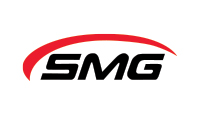In my previous blog we talked about important elements of the pretreatment program. Now let’s take a look at the corresponding pretreatment standards.
There are three types of national pretreatment requirements:
1) Prohibited Discharge Standards are designed to protect against pass through and interference generally. These are developed at the federal level (40 CFR 403.5 (a) & (b)) and are applicable to all Industrial Users. There are two types of prohibitions – General and Specific prohibitions.
General prohibitions forbid the discharge of pollutants to a POTW that cause pass through or interference. Specific prohibitions forbid eight categories of pollutant discharges:
•Pollutants that create fire or explosion hazard;
•Pollutants causing corrosive structural damage to the POTW;
•Discharges containing pollutants in amounts causing obstruction to the flow into the POTW, resulting in interference;
•Pollutants released at a flow rate or concentration that will cause interference;
•Discharge of heat in amounts that will inhibit biological activity in the POTW;
•Discharge of petroleum oil, non-biodegradable cutting oil, or products of mineral oil origin in amounts that will cause pass through or interference
•Discharge that results in the toxic vapor, gases, or fumes within the POTW in a quantity that could cause acute worker health and safety problems;
•Discharge of trucked or hauled pollutants except at discharge points designated by POTW.
2) Categorical Pretreatment Standards are the national standards developed by EPA on an industry-by industry basis (40 CFR Parts 405-471). These standards are applicable to all CIUs and are designed to ensure that CIUs implement technology based controls to limit the discharge of pollutants to POTW. Expressed as numerical limits and management standards, categorical standards apply to specific categories of Industrial Users and limit the discharge of specified toxic and non- conventional pollutants to POTWs. These standards include specific limitations for different industrial sectors and limits are different depending on whether the industry is new or existing.
3) Local Limits address the specific needs and concerns of a POTW, its sludge, its receiving waters and its responsibility to protect POTW personnel. As per 40 CFR 403.8(f)(4) and 122.21(j) (4) POTWs are required to evaluate the need for local limits and implement and enforce the limits, if necessary, as part of the pretreatment program. These limits are applicable to all IUs or all SIUs depending on the allocation method used when developing local limits.
In my next blog I will be talking more about Local Limits.
If you have any questions, please contact me at shrivani@smithmanage.com
Source: U.S. EPA Introduction to the National Pretreatment Program, 2011.
